2013 Nissan Leaf Review

Many said it would never happen. The electric car would never work, people would not buy them and vehicles like the Nissan Leaf were doomed from the start. Someone should have told Nissan.
FAST FACTS
| 1. An 80 kW AC motor generates 107 horsepower and 187 lb-ft of torque. |
| 2. The Leaf is rated at 129 MPGe city and 102 MPGe highway with a range around 75 miles. |
| 3. The base price of the Leaf SL is $34,840 with our test vehicle coming in at $36,740 after destination charges. |
| 4. Despite being an electric vehicle, there is still 24 cu-ft of rear cargo space. |
Now entering its third year of production, the Leaf isn’t just surviving but actually gaining momentum. For each of the past two years, roughly 9,500 Leafs were sold. This year through September, over 16,000 Leafs have already left showroom floors and it’s on pace to outsell the past two years combined.
The reason for this sales surge is two-part. First, for 2013 prices were slashed and a new more basic Leaf was introduced. The S trim starts at $28,800 before incentives, which is over $6,000 cheaper than the base 2012 Nissan Leaf. The SV and SL trims have also received price reductions this year, dropping by $3,380 and $2,410 respectively.
FASTER CHARGING
The second big change for 2013 is the addition of a 6.6 kW onboard charger for SV and SL trimmed Leafs. Compared to the 3.6 kW unit found in previous models (and still in the base S), the new charger reduces full charging time on a 220V power source from seven hours to just four.
SEE ALSO: What is MPGe?
As a bonus, all 2013 models also feature improved aerodynamics, better regenerative braking and improved energy management. This all adds up to extra range, now totaling 75 miles.
To see if the cheaper, more efficient Leaf was an improvement over the 2012 model, we rang up Nissan and asked if we could borrow one. Since none of the AutoGuide staff owns a stage two charger at home, we would be relying on public fast chargers and the electric car equivalent to a dial-up modem: 110V power. My commute is roughly 49 miles round trip which is well within the Leaf’s range, even when driving it like Stuntman Mike.
The problem I faced was charge time. With my piddly 110V home outlet, I need 21 hours to recharge this car if I let it get drained. Since work doesn’t allow me to put in three-hour days, I was going to need to rely on public stations to get a quicker charge.
LOW POWER, LOW POWER USAGE
As a quick recap, the Leaf uses a 24 kWh lithium-ion battery pack paired to an 80 kW AC motor that generates 107 horsepower and 187 lb-ft of torque. A single speed reducer sends power to the front wheels and allows the Leaf to achieve 129 MPGe city and 102 MPGe highway fuel economy equivalency rating. These are high enough numbers to trump both the Ford Focus EV and Mitsubishi i-MiEV all-around, as well as the Chevrolet Spark EV in city, but not on the highway.
Now 107 hp may not sound like much for a 3,340 lb car, but the instantaneous, seamless torque more than makes up for it. The Leaf accelerates swiftly around town, but does lack enough grunt for untimed highway passes.
In “B” mode, the regenerative brakes become more aggressive and work to maximize range. After a small adjustment, I was able to fully exploit them to perform the majority of my braking while also extending my range. When driven mildly, I was achieving 75-78 miles, which is right on the official estimates. Driven like a lunatic escaping imaginary enemies, my range dropped to about 60 miles.
LET THE LEAF EASE YOUR MIND
If range anxiety is an issue for you, the Leaf does try to ease your mind as much as a lifeless object can. The GPS system showcases two circles spread-out from the car’s current location. The darker circle shows the range the car should have no issue obtaining and the larger, lighter circle shows how far the vehicle could go under optimal conditions. If still worried, the Leaf has the ability to find the closest charging station.
Other than the electric whirring under the hood, the Leaf drives similarly to an internal combustion vehicle. The 215/50R17 low-rolling resistance tires squeal under moderate cornering, but this isn’t meant to be a sports car. The suspension is very compliant and the car tracks straight, even at highway speeds.
CONVENTIONAL INSIDE
Our test vehicle arrived as the Leaf SL with the premium package that added Nissan’s great “Around View” Monitor and a seven-speaker Bose audio system. This bumps the $34,840 base price up to an as-tested figure of $36,740 after destination charges. For 2013, the SL also receives leather seats and 17-inch aluminum-alloy wheels to go with the usual upgrades of LED headlights, fog lights, cargo cover and quick charge port spoiler mounted solar panel.
See Also: 2012 Nissan LEAF Review – Video
The Leaf is officially rated as a mid-size car thanks to generous interior room even if an overall length of 175-inches makes it shorter than the Nissan Versa sedan. Unlike other electric vehicles that have been converted from a regular car, the Leaf was designed as an electric car from the ground up. This means there is a decent 33.3-inches of rear legroom and a deep, 24 cubic-foot cargo hatch. The rear seats also fold flat allowing the storage of a lot of gear when needed.
Even if the Leaf may pass off as a regular on the inside, it doesn’t on the outside. Looking a bit like a frog thanks to the upward protruding headlights, there is no mistaking the it on the road for anything else and no missing that it’s an EV. It’s not as extreme as the Mitsubishi i-MiEV, but those looking for a subtler electric car will want to look somewhere else.
THE VERDICT
The Leaf is a solid vehicle. Period. Not just a solid electric vehicle, this car can do anything any other car its size can, with the exception of long distance road trips. And that has always been the point of an electric car: to perform the tasks of conventional cars without tailpipe emissions. We are still not quite there, but the Leaf is one of the closest solutions.
LOVE IT
- Refinement
- Lower price
- Practical
- New quick charger
LEAVE IT
- Range limited
- Interesting exterior
- Still pricey

A 20+ year industry veteran, Mike rejoins the AutoGuide team as the Managing Editor. He started his career at a young age working at dealerships, car rentals, and used car advertisers. He then found his true passion, automotive writing. After contributing to multiple websites for several years, he spent the next six years working at the head office of an automotive OEM, before returning back to the field he loves. He is a member of the Automobile Journalists Association of Canada (AJAC), and Midwest Automotive Media Association (MAMA). He's the recipient of a feature writing of the year award and multiple video of the year awards.
More by Mike Schlee

















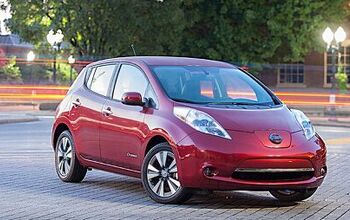
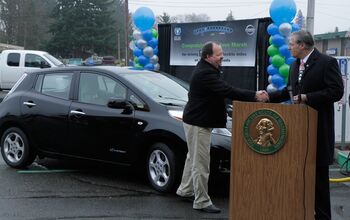

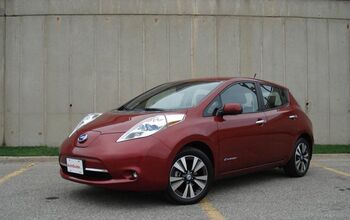




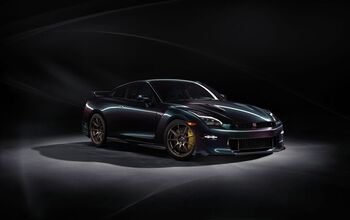



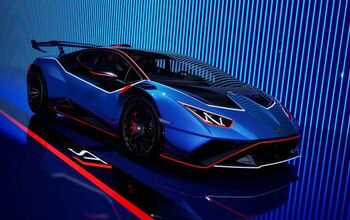

Comments
Join the conversation
I bought a Nissan leaf about a month ago and am very disappointed with it. it never seems to be off charge and I never get it to its maximum level od 124 miles . It has only ever shown a maximum of 90 miles on the clock and it sticks religiously to that. Dont get me wrong . The car is nice to drive and very comfortable but I get sick and tired of having to constantly charge it. To think I traded in my 5series against this car !! My wife has a large car so we are fine in that respect. Has anyone tried to get a valuation since driving it from the garage?? How about 14k after three weeks, a loss of 9k . Give me back my 5 series.
I have a nissan leaf and travel without range anxiety Why I have an oil banger back up and sub consciously plan my driving day Guess what No gas station visits I have solar panels in my roof 28 of them No charge on electic fuel electric cars are miles ahead of all vintage conventional engines excluding the vintage electric teams in Melbourne and electric trolleys in Athens Difference Electric cars are simply wireless